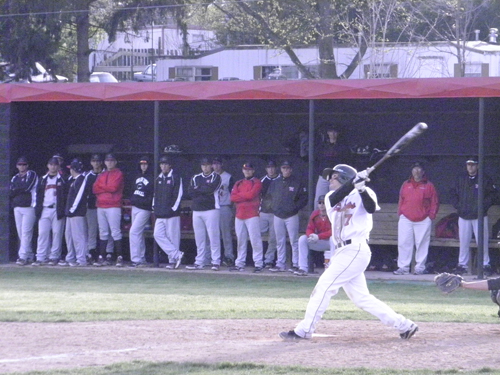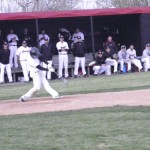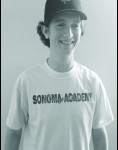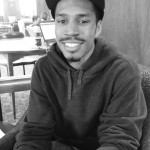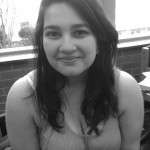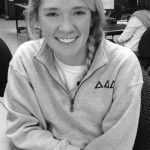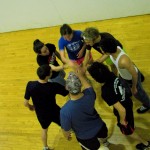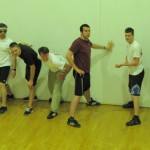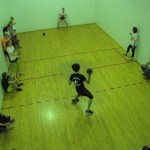It is the bottom of the tenth and Muskingum is leading the Bishops, 5-4.
Ohio Wesleyan catcher junior James Toland steps up to the plate.
OWU has two outs. Toland gets two strikes on the board and the game is surely lost for the Bishops—No.
He hits a grounder to Muskingum shortstop Nathan Hunt, who fumbles, letting Toland run to first.
Next up, with the bases loaded, is OWU sophomore third baseman Sean Vollenweider, who smacks the ball into a gap in right center field.
Two Bishops score, giving them just enough runs to clinch the win, 6-5.
Vollenweider said he strategically won the almost three hour game.
“I was able to find a hole,” he said. “It was a big win for us. Hopefully it will get us prepared and carry us through the next few games.”
Head coach Tyler Mott said OWU built off their hitting momentum in the tenth inning.
“I’ve seen it happen at OWU games before. Everyone just feeds off of it. When you put on a uniform you don’t always know what to expect. Baseball is a funny game.”
The game score flip-flopped, with Muskingum opening the game with two runs, OWU gaining the lead with a triple in the fifth–losing it in the sixth–and finally winning the game in the tenth.
“Scoring two in the bottom of the tenth shows we have a good team and good character,” Mott said. “Anything can happen.”
The Bishops are playing Muskingum this weekend in a doubleheader at Littick field Friday and Saturday at noon.
African Americans face unique challenges at OWU
Editor’s Note: This feature story was written by a member of the community discussed and represents her perspective.
_______________________________
Imagine sitting in a classroom and being the only person that looks like you. Imagine being the only one with your skin complexion, similar features, background or experiences and feeling like an outcast in a room full of people trying to learn.
Black students account for 4.6 percent of the student population here at OWU. Of the 1,952 members of the entire student body, 89.7 students are African American. There are seven current African American and African/ Caribbean native professors actively teaching here.
It’s not uncommon to be the only black person in a class or to go through an entire day without seeing a professor or another student of color. How do these students of color cope? What are the professor’s perspectives? What are their different experiences?
The Minority
One of the most well-known African American professors on campus is Emmanuel Twesygie, or as many students refer to him “E.T.” Twesygie can be seen wearing thick brimmed circular glasses, a sandy brown tweed blazer, a sky blue buttoned collared shirt, and a neatly tied tie.
His most notable features are his thick British American accent and a coarse one inch afro. Or as he would refer to it: “my nappy head.”
Although students get a kick out of his eccentric teaching style and catch phrases such as “PG-18” they are not aware of how he developed his unique teaching techniques. Twesygie said that as a black professor, students assume he’s here because of affirmative action.
“We have to prove intelligence…when I tell students I wrote a book they don’t believe it. Only white people write books?” he said, followed by a chuckle.
When sitting in one of Twesygie’s church history, theology or Christian ethics classes, there is a different structure to the class, “a method to his madness”.
It’s not lectures and power points or based off of hours of note taking and stenography. Participation, interaction and in depth thinking is required in all his courses. He teaches with a sense of humor on a serious topic, like religion.
“I don’t think I teach any differently than a white professor,” he said. “I just go off my experiences. White professors tend to leave out topics they don’t feel comfortable with. Slavery, race and gender (are) about tradition. I’ve been through it so I can talk about it.”
“I’m not afraid to single out a student if I think they can relate and share,” he said. “You are black has this ever happened to you?”
Junior Briana Chelsea Perez is 5’10 with lanky limbs, a short bob cut, and thick black glasses.
Perez is used to having to be the voice for the black perspective in a classroom setting.
“When the topic of racial issues and black history questions are asked, everyone looks at me for the answer, which at times can be quite annoying,” Perez said.
Originally from Brooklyn, New York, Perez is a Jamaican-American who was raised by a single mother. In such a large city, diversity is not an issue. New York is a stopping ground for so many cultures and ethnicities that the shift to a desolate city like Delaware came with some culture shock attached.
Perez said not only was the geographical shift hard to make, but in combination with financial and social issues and lack of diversity on campus, these last three years have not been the easiest.
“At times I have found it to be quite boring here and (have) felt like the black community at Ohio Wesleyan is extremely limited,” she said while watching BET (Black Entertainment Television). “The only reason why I have stayed this long at Ohio Wesleyan is because, financially, they have helped me a lot.”
Perez has received numerous financial aid awards and scholarships. This is how the majority of black students say they are able to afford OWU. However, she said she has seen a lot of black students leave because they can’t afford to stay.
Extra Curricular Acceptance
2011 alum Alum Tyler Cordell said in her four years at OWU she has seen black students come and go. Being the face of the OWU women’s basketball program and the only black member of the Lacrosse team Cordell was no stranger to representing diversity at the University.
“I saw so many friends leave every year I was at OWU,” she said. “People always think it’s because we can’t make it academically. There are so many other factors that come into play. I was able to make the best out of my experience by networking. But I also knew my role. Anytime we had a black recruit on campus, I knew I would be showing them around.”
2011 Alumna Larissa Anderson agreed with Cordell on the issue of diversity at OWU.
“They (the school) are real quick to find a black face to put on a brochure…to show that it’s diverse. To me that doesn’t show diversity,” said Anderson.
Perez shows a larger framed portrait with dozens of girls grinning while posing and holding up a triangle symbol with their arms. This is the symbol for Delta Delta Delta sorority, which Perez was a member of last year.
Looking at the picture yet again, much like in the classroom, Perez said she was playing the role of the “token” black girl.
Me: “What was it like being one of the only black women in a sorority?”
Perez: “The sorority was more of a sisterhood,” she said as she gazed at the picture and smiled. “It’s one of the only times at OWU that I didn’t feel like just the black girl. Or that I had to prove myself to others. I felt like I was part of a group…a family…We all had something in common that had nothing to do with race. I think if more students of color joined them it would really help their experience here.”
Me: “Did you ever get any questions about being a black woman?”
Perez: “Yes,” she laughed. “I have had that happen a lot. I have been asked various racial questions like, ‘why do you guys do stuff like that’ or, ‘why is your hair like that’. I feel like it is not my job to educate them on those things even though I do not mind doing it. I get annoyed sometimes about it because I don’t ask questions like, ‘why do you have hair like that’ or, ‘why do you guys act the way you do.’”
Perez said she got these questions more from students outside her sorority rather than in it.
“I look at you as a person and not by the color of your skin, it’s not like I don’t notice it, but it’s like I care more about you as the person and not your racial outline”.
Stereotypes
Black culture, rap, hip hop, and urban culture have become increasingly popular over the years among teens and young adults.
People are constantly trying to learn and emulate the behavior seen in the media. Many black students on campus said they have become accustomed to being asked questions like; “Can I touch your hair?”,
Freshmen volleyball and basketball player Latavia Croom said she gets asked these questions all the time.
“I get a lot of comments from friends here at OWU,” she said “Mostly questions about my hair and silly questions about how to do a certain dance or why do black people say this or that.”
“It’s kind of annoying, though because some of the questions I get I’m like ‘where did you get that from?’ I guess there are just a lot of stereotypes.”
A former OWU student, Chanel Poston, said her first day on campus she was asked, “How does it feel to be a black woman at OWU?”
Poston: “I told the girl I don’t know. I’ve only been on campus an hour, I’ll let you know when I’ve been here longer. A couple weeks later, another girl told me I was her first black friend. I continually got these types of uncomfortable questions and statements at OWU.”
Black males on campus have the worse retention rate of all students. Freshmen Getner Fabre, said he is aware of this fact and he feels more pressure to succeed in the classroom over his peers.
“I feel a lot more pressure being a black guy,” he said. “Because if you ever take a picture of one of my class rooms you will see me being the one that stands out being the only black kid in my class. I know that I have to keep my grades up and do a lot better than everyone. If I don’t, then it will look bad for the black students on campus, the school and my parents.”
Poston said while she was at OWU, she also felt the pressure to stay ahead of her peers.
“I would always come early and sit in the front of my classes,” she said. “I would always dress nice; I never wanted to be the black girl that stood out.”
African American students and professors at OWU constantly feel the need to prove themselves. They say they are representing an entire community.
Being bombarded daily with questions about their culture and behavior is yet another reminder of their minority status on campus.
There are sources such as sororities, fraternities, sports teams, organizations and clubs where the black community say they feel the most support on campus.
In the end, all the obstacles that they face while attending OWU will most likely occur in the real world, which is why many students stay.
Student assaulted on Sandusky Street
An Ohio Wesleyan student was hospitalized after he was assaulted and robbed early Sunday morning.
The assault occurred around 2:20 a.m. Sunday behind JP Skate Shop at 36 Spring St., just west of South Sandusky Street, according to the police report released by the Delaware Police Department. The incident was reported to DPD at 6:14 p.m. Sunday, almost 14 hours after the crime occurred.
Three males attacked the student and took his money, according to the report. No evidence was collected concerning the assault and no weapons were used in the assault. No arrests have been made and the suspects are still at large.
The university sent out an email alert at 8:25 p.m. Sunday to inform students of the incident. The alert went on to tell students that three black males, one with dreadlocks, approached the student, assaulted, and then robbed him.
The student was then transported to Grady Memorial Hospital where he was treated for minor injuries and released.
A woman who works for DPD and wished to not be identified said Public Safety was first to respond to the incident and they immediately notified the police. The case is currently under investigation.
According to Director of Public Safety Robert Wood, PS was not notified of the incident for about 14 hours after it occurred. A parent called to report the incident and that was when PS notified law enforcement.
“We were not aware of the incident until Sunday afternoon,” Wood said. “Once we found out, Delaware Police were immediately notified.”
“The incident occurred on the south side of Spring Street near the skate shop. This is not OWU property so we will be unable to conduct an investigation; it falls under DPD jurisdiction. However, we will provide patrols and we will make sure that students are aware of what occurred and that they are safe.”
Wood said that the assailants did not use any weapons.
According to Wood, no other witnesses have come forward to provide further details on the incident.
The attack occurred when many of the bars close and he hopes that further details will be provided if any students witnessed the incident.
Sophomore Joseph Beshara said that he knows the victim and went to visit him at the hospital.
“We went to see him,” said Beshara. “He’s got a broken nose and some cuts and bruises.”
According to Beshara, the assailants did not take his wallet.
“He was coming back from Dan’s Deli and they just jumped him,” he said. “Maybe it was a gang thing, I don’t know. Apparently the whole thing only lasted a few seconds and then they were gone”
According to the email sent out by the university, PS will be providing extra patrols in the area of the assault.
The email urges students not to walk or jog alone at night and to always carry a cell phone.
Sound-Off OWU: Would you want to live in Stuy next year?
Professor discusses national mystery on History Channel
On January 14, 1950, West Point cadet Richard Cox vanished into the night and forever entered the halls 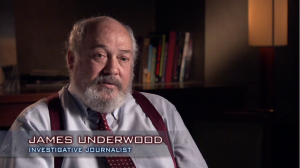 of unsolved mysteries.
of unsolved mysteries.
Numerous manhunts by the FBI amounted to little more than empty leads.
But where the FBI and other investigators failed, James Underwood, Ohio Wesleyan adjunct journalism professor, succeeded.
On March 17, Underwood appeared on the History Channel to recount some of the clues he followed nearly 30 years ago.
Underwood started his investigation in 1982 and ultimately acquired over 4,000 documents related to Cox.
He said multiple news agencies and FBI agents have since contacted him to see his collection.
The History Channel gave Underwood little time to prepare for the interview. They contacted him March 7 and flew him to San Francisco two days later.
He shipped the producer some of his case-related documents when he returned home on March 10. On the show “America’s Book of Secrets”, Underwood talked about how he believed Cox left West Point to join the CIA.
Numerous sightings after his disappearance bolstered this claim, including one in 1960 which hinted Cox played a role in the Bay of Pigs invasion.
Few people have the opportunity to say they have been involved in what has been called one of America’s top 50 mysteries. Underwood said he continues to wonder about Cox’s case.
“If I don’t think about the Cox case every day, there is hardly a week that goes by that I don’t think about him, his family, the dozens of people I’ve interviewed and the case itself.”
Underwood said he has always hoped Cox might contact him and answer the multitude of questions left unanswered.
“But, as the years go by (he would be 84 years old if still alive) the likelihood of ever knowing what really happened to him diminishes,” Underwood said.
Underwood said he may donate his case files to Ohio Wesleyan.
These historical documents, some topped with FBI and CIA headers, comprise all that is publicly known about Cox’s disappearance.
The Journalism Department may digitize these documents so anyone can review Cox’s case.
Assistant journalism professor Melinda Rhodes said she plans to upload the historical files onto the library or journalism department website.
“I think this is an example of the way primary source material can be digitized and uploaded for the use of as many people are interested in the case.” Rhodes said.
“It illustrates the paper trail that tells us much about the history of an individual and, as a result, our collective history. It speaks to politics and policy in context.”
Underwood’s interview can be seen in “America’s Book of Secrets: West Point” on the History Channel.
Students learn calligraphy, culture
Chinese calligraphy dates back 5000 years. On Saturday, students had the chance to learn and practice the art one stroke at a time.
The Chinese program hosted a three-hour workshop, led by Chinese calligrapher Bangji Lin, that taught students the history and art of Chinese calligraphy. It detailed the four treasures of calligraphy: the ink brush, the ink, the paper, and the ink stone.
Ching-Hsuan Wu, assistant professor of modern foreign languages, said calligraphy is a staple in Chinese culture and studying the Chinese culture is just as important as studying the linguistics of the language.
“Learning Chinese is more than just being able to understand the language,” Wu said. “Learning about the culture is just as important. It’s hard to learn about the culture without studying the art of calligraphy.”
Wu said calligraphy has existed in Chinese culture for thousands of years. She said it was the primary way people wrote before pens and pencils existed.
“Today, calligraphy is more about culture and art,” Wu said. “It’s more than just simply drawing a character. The sequence of strokes matters.
“I was hoping to bring students’ attention to the importance of the sequence of each stroke.”
Sophomore Austin Viny said he has had some prior experience with Chinese calligraphy and was able to get more practice at the workshop.
“I was surprised at the extreme amount of technique required to use the calligraphy brush properly,” Viny said. “But so much history and art can be portrayed through calligraphy.”
Sophomore Alvince Pongos said he was amazed at how rich the history of calligraphy is and its artistic importance in Chinese culture.
“It is important to study the art of calligraphy for the same reasons why it is important to study any art,” Pongos said. “To learn art is to learn about self.”
Wu said when she was in school, students were required by the government to learn calligraphy.
“The state required us to keep journals at school,” Wu said. “Each week we practiced calligraphy in our journals to be sure we were familiar with the art.”
Wu said calligraphy brushes can range in size. Some look like paint brushes, whereas others can be the size of a person.
The biggest brushes were used on huge canvases that people would hang on the walls of their house, Wu said.
There are also a variety of materials used for the bristles, according to Wu. Many are made with horse, lamb or pig hair, Wu said.
“Some brushes are even made with newborn baby hair,” Wu said. “When a baby is born, we wait to cut his/her hair until it is a few inches long. We then make souvenir calligraphy brushes out of it.
“That’s how important this art is in the Chinese culture.”
Wu said last year she taught calligraphy in class on three separate days. This year she wanted to combine it into one day, Wu said.
Greek of the week
Stephanie Childers- Delta Zeta
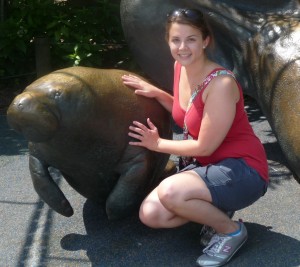 Stephanie Childers has been a wonderful asset to the OWU and Greek community. In Delta Zeta she has been in charge of new member education, and has taken on the role perfectly. Each week she comes up with creative ways to teach the chapters history while also acting as a mentor for the new members.
Stephanie Childers has been a wonderful asset to the OWU and Greek community. In Delta Zeta she has been in charge of new member education, and has taken on the role perfectly. Each week she comes up with creative ways to teach the chapters history while also acting as a mentor for the new members.
Besides her dedication and involvement to Delta Zeta, Stephanie also works with students at Woodward elementary school and works on campus at the Curriculum Resource Center. Although she is involved in all of this she still finds time to volunteer at the Early Childhood Center because she enjoys giving back to her community, especially children.
Stephanie is a role model to the OWU community.
Delta Zeta takes on speech and hearing Annual dodgeball tournament raises money for Gallaudet University
Trouse heads outdoors
With the start of spring weather, sophomore Ashley Taylor, a resident of the Tree House, has begun organizing outdoor trips for students during April.
These trips are being planned for her new position in the Environment and Wildlife Club as the adventure coordinator, as well as for her SLU house project for the Tree House.
Taylor said the first trip she planned was cancelled, but has been rescheduled for April 7 at Alum Creek. She said she is planning on having hikes each weekend in April, and hopes to end with a camping and rock climbing trip to Red River Gorge in Kentucky.
“I want to get more of the students off campus and into nature,” she said. “Delaware isn’t exactly a large city, but it’s enough of a concrete jungle to make some of us go nuts. I would like to get more of the Delaware community to come, as well as some of the OWU faculty and staff out for our hikes to talk about our native area.”
Taylor said junior David Reitan, president of the rock climbing club, and OWU Assistant Chaplin William Hayes have helped her plan the trips.
“(Reitan) was interested in potentially taking the club out with my series to do some natural rock climbing, rather than at the gym in Columbus,” she said.
“My main task is trying to get guides for the trip, or people who can supervise from a climber’s perspective,” Reitan said. “My goal is to get a rock climbing or camping trip to the Red River Gorge settled for the end of April, and to help promote Ashley’s ideas.”
Taylor said Hayes will be coming with the group on the trips.
Hayes said he has talked to Ashley about also collaborating on one or more of the trips with the Outdoor Ministry Team.
He said OMT is a group that focuses on Christian outdoor leadership, making connections between faith and outdoor experiences, and adventure with a purpose.
Taylor said Hayes also organizes Fresh X, the pre-orientation camping trip for freshmen.
“I’ve known Ashley for two years since I met her on Fresh X in 2010, and she has also attended OMT,” Hayes said. “I’m always eager to help and give advice to students who are interested in doing things outdoors.”
To get credit for her house project, Taylor said she had to get it approved by the house residential life coordinator, and it must promote some aspect of environmental consciousness which allows the participation of the OWU and Delaware community. While the series of trips is her house project, Taylor has a more important reason for planning them.
“I chose this project because being outside is one of the greatest places to be, whether it’s doing homework or taking a study break and playing catch,” she said. “I want to share that with more people.”
Taylor said Alum Creek is the only trip planned for April 7, but she will announce times as the dates get closer and she can monitor the weather. She said the trips will mostly be on Saturdays, and if more students are interested in them, she can be contacted at altaylor@owu.edu.
HaitiOWU and Amato’s unite for charity
Amato’s served up philanthropy money for HaitiOWU last Thursday.
HaitiOWU, a student organization that partners with the Pwoje Espwa (Project Hope) orphanage in Les Cayes, Haiti, held a fundraiser at Amato’s Woodfire Pizza, located on Sandusky Street.
They asked students and faculty to visit Amato’s for dinner and state they wanted to donate to HaitiOWU with their order.
15 percent of their meal cost was then given to the organization, which houses 800 children and provides them with housing, food, clothes, health care and education.
Senior Shane Wepprich traveled to Pwoje Espwa last year and was a part of the fundraising effort.
“We take no profit and give 100 percent of all donations to the orphanage,” he said. “Everyone that came to Amatos and supported HaitiOWU, gave 15 (percent) of their bill directly to the children of Pwoje Espwa.”
The students first came together last spring in preparation for their initial visit to Pwoje Espwa in May and have worked to continue fostering a connection with the orphanage since returning to campus.
“Our goal is to create a long-term relationship to help the orphanage become self-reliant, and to provide Pwoje Espwa with their immediate needs,” Wepprich said.
Sophomore Katalyn Kuivila attended the fundraising dinner after seeing a flyer on campus and thinking it was a worthwhile organization to sponsor.
“I think it’s very important because they want to establish a long-term relationship (with Pwoje Espwa),” Kuivila said. “I think it’s great that they’ll keep sending students and giving them experience.”
Dorota Kendrick, assistant director of International and Off-Campus Programs, was one of the faculty advisors for the trip to Haiti. Planning this fundraiser has been one of the many ways HaitiOWU has shown their continued dedication to Pwoje Espwa since returning.
“This group of students has shown so much commitment since coming back,” Kendrick said. “The passion is still there, the excitement is still there.”
Kuivila likens the work HaitiOWU does to spring break mission trips.
“I attended a mission trip this spring, and it was a great experience,” she said. “I think that HaitiOWU is providing students with the same type of thing.”
Both Kendrick and Wepprich say that HaitiOWU hopes to continue growing their relationship with Pwoje Espwa, and to build support here on campus with projects like the Amato’s fundraiser.
“I would love to see this continue to blossom,” said Kendrick. “I think liberal arts students have so much to offer because of their different majors and interests. It’s one of the strengths we have here at Ohio Wesleyan.”
HaitiOWU is currently reapplying for a TiPiT grant to fund a tentatively-planned revisit to the orphanage in mid-August. Applications to be part of the team are being accepted until April 6.
